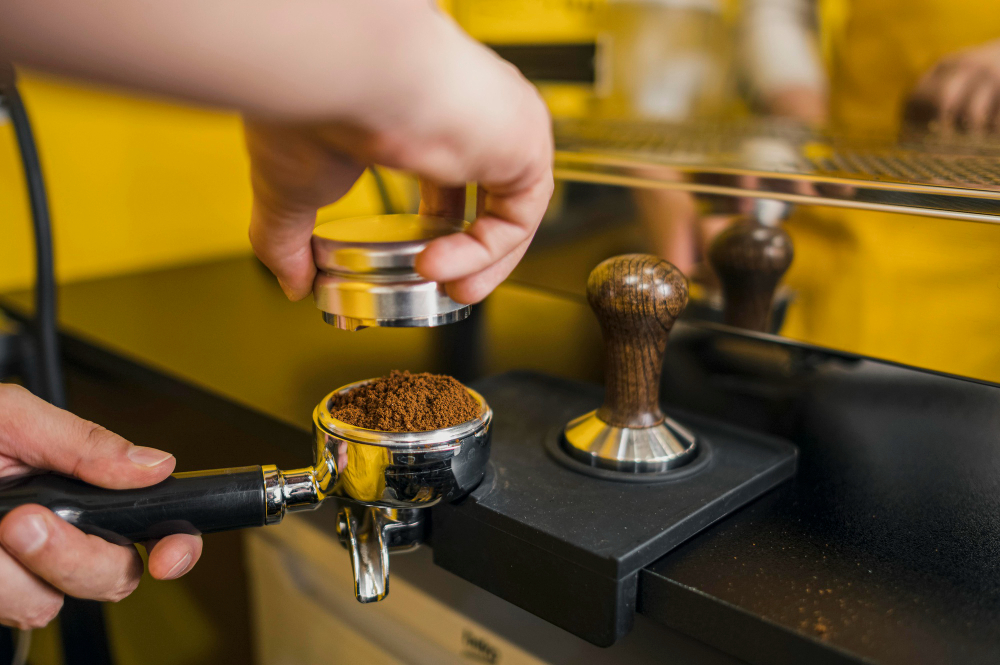Coffee roasting is indeed both an art and a science that plays a crucial role in determining the flavor profile of the final cup of coffee. Here’s a deep dive into the coffee roasting process:
Green Coffee Beans: The process begins with green coffee beans. These beans are the raw seeds of the coffee cherry and have a grassy smell and taste. You should make the right coffee bean selection to end up with desired flavors and roast profile
Roasting equipment: similarly, you should also select the right roasting equipment. They vary from small batch drum roasters to commercial grade automatic roasters. The professional coffee roasting machines offer excellent levels of control over roast temperature and input rate. They have sensors to keep track of metrics such as temperature and color changes.
Roasting Process: The roasting process involves applying heat to the green coffee beans in a controlled environment. As the beans heat up, they undergo numerous chemical changes that transform their flavor, aroma, and color.
SELECTING THE RIGHT ROASTING TECHNIQUES
One of the very first things you should do with coffee roasting is to understand the right roasting techniques. They include;
- Air roasting: Blowing hot air around the coffee beans to ensure even heating
- Drum roasting: Agitating the coffee beans in a rotating drum over a flame. This also ensures consistent roasting
- Hot plate and fluid bed roasting; Passing conductive heat through metal plates or fluids such as oils to sand and roast coffee.
PHASES OF ROASTING - Drying Phase: The beans are dried using high heat to remove any remaining moisture.
- First Crack: As the beans heat up further, they reach a temperature that causes them to crack audibly. This is known as the first crack and signifies the beginning of the development stage.
- Development Stage: This is where the flavor compounds in the beans develop and the sugars caramelize, leading to the formation of complex flavors.
- Second Crack: Some roasts may reach a second crack, which is usually associated with darker roasts.
ROAST LEVELS
– Light Roast: Light roasts are light brown in color and have a higher acidity and milder flavor profile.
– Medium Roast: Medium roasts have a richer flavor and a balanced acidity.
– Dark Roast: Dark roasts have a shiny surface due to the oils that have been brought to the surface and have a strong, bold flavor.
After roasting, the beans are quickly cooled to stop the roasting process. They are then rested for a period of time to allow the flavors to stabilize.
Proper storage of roasted coffee beans is essential to preserve their freshness and flavor. Beans should be stored in a cool, dark place in an airtight container.
Once the beans have rested, they can be ground and brewed to extract their flavors and aromas into a delicious cup of coffee.
Remember, the roasting process greatly influences the final taste of the coffee, so experimenting with different roast levels and origins can lead to a wide range of flavor profiles. Enjoy your coffee journey!
CUPPING AND TASTING YOUR COFFEE
The proof lies in the brewing. After every batch roast, cupping sessions allow assessing all the factors of the roasted coffee from dry fragrance to infusion time, body characteristics and finish on the palate. No single measurement captures overall quality and flavor. You can only do it with human tasting. This is where you can tell about the roasting defects as well.
If you can minimize the roasting defects and come up with excellent roasting profiles, you will be an expert in the art of roasting coffee. With that, you can go ahead and take your roasting business to the next level of success.

